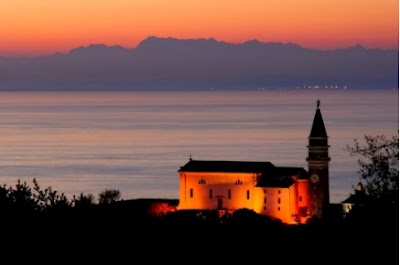
The Pula arena is an ancient stone amphitheatre located in Pula, a port city on the southwest coast of the Istrian Peninsula of Croatia. This arena is the only remaining Roman amphitheater to have four side towers and all three Roman architectural orders entirely preserved. It is the sixth largest surviving Roman arena, having replaced a smaller stone ampitheatre in 79 AD; the enlargement to a capacity of 23,000 spectators was necessary in order to accommodate crowds drawn to the gladiator fights. This arena remained a part of the gladiator circuit until the 5th century, when Roman emperor Honorius prohibited gladiator combats. However, it was not until 681 that battles between convicts (with a death sentence) and wild animals was forbidden (and to think we get upset about dog fighting these days).
Each of the four towers had two cisterns filled with water that fed a fountain and powered primitive misters that sprinkled perfumed water onto the spectators. This amphitheatre could be covered with large sail cloths to protect the spectators from sun or rain, as attested by intact rare construction elements. A series of underground passageways was built underneath the arena along the main axis, from which animals, scenery, performers and fighters could be released; stores and shops were located under the rows of raked seating. The present day museum under the arena has exhibits of Roman wine making and olive oil processing; both of these Istrian products were goods highly valued by the Romans.

In the Middle Ages the interior of the arena was used for grazing, tournaments by the Knights of Malta and fairs. In 1583 the Venetian Senate proposed dismantling the Arena and rebuilding it in Venice, but this plan did not come to fruition. In 1709 some stones from the arena were used for the foundations of the belfry of Pula’s cathedral. In 1932 it was adapted for theater productions, military ceremonies and public meetings. In its present state it seats some 5,000 spectators.
Il Divo: Amazing Grace Recorded and videotaped at the Arena in Pula, September, 2008, complete with bagpipers and full symphony orchestra. "Amazing Grace" is from the Il Divo CD "The Promise" and DVD "Il Divo at the Coliseum."
Extreme trivia: bagpipes play only in the key of E-flat, so we don't have to guess which key they sing in after the bagpipes enter.http://
www.youtube.com/watch?v=mMVxzEueJ6A&NR=1Il Divo (Italian for “star” or “celebrity”) is a multinational operatic/pop vocal group created by Simon Cowell (yep, the one from “American Idol”). Cowell conducted a worldwide search for young male singers who were willing to embark on his 2001 “Il Divo” project in an effort to create a “Three Tenors” ensemble with repertoire leaning more toward pop music. And, like the Three tenors, they tend to bellow full throttle. In December, 2003, a fourth member, American tenor David Miller, was signed. Il Divo comprises a renowned Spanish opera baritone, Carlos Marín; two classically trained tenors, Swiss Urs Bühler and American David Miller (he starts the second verse in the video above); and a French pop singer, Sébastien Izambard (the only group member who was not classically trained; hint: he's the one singing solo at the start of the video posted above). Definitely not to everyone’s taste, but Il Divo has become an international sensation, and (in an age rife with spin-offs) to date they have no serious competition. Plus, they have caused a spike in sales of Armani suits. Way more than you wanted to know.October 18, 2003: Cravat around the Arena
Staged as a major work of world performance art, which was seen on television throughout the world by an estimated one billion viewers, “Cravat around the Arena” was considered the most ambitious promotion of the Croatian identity in the world to date. The necktie originated in Croatia in the seventeenth century. This installation, incorporating the largest cravat in the world, symbolically brought together the ancient and modern ages, and the red color of the cravat sent a message to the world of love and life together of peoples and nations. Most of the grunt work of the installation was accomplished by Pula high school students.
Trivia: the knot was not tied beforehand, and its execution presented major complications and trials for the installers; between the knot and the harbor, the tie was strung up over a street (which remained open to traffic) and extended over to a large parking lot.
Few people are aware that neckties originated in Croatia around 1635. The word “cravat” is derived from the word “Croat,” and neckties are descended from the neckwear that Croatian mercenary soldiers wore. Because some Croatian mercenaries were stationed in large, fashionable cities such as Paris and Prague, this “Croatian style” greatly impressed their foreign counterparts. Croatian military officers wore tied neck scarves made of silk, and French men adopted this new fashion during the reign of Louis XIV, referring to it as “a la Croate.” Eventually, it became known by the French word “cravate.” The tie entered the bourgeois fashion of that era as a sign of cultivation and elegance and went on to conquer the whole of Europe. In contrast to the lace collar that had to be kept white and carefully starched, the cravat was simply and loosely tied around the neck without need for any additional care. Today, men across the entire civilized world wear neckties. Unlike many fashions, which fade or disappear over time, the necktie has retained its popularity for hundreds of years and is still considered a basic item of most men’s wardrobes, rather than just a decorative accessory.












































